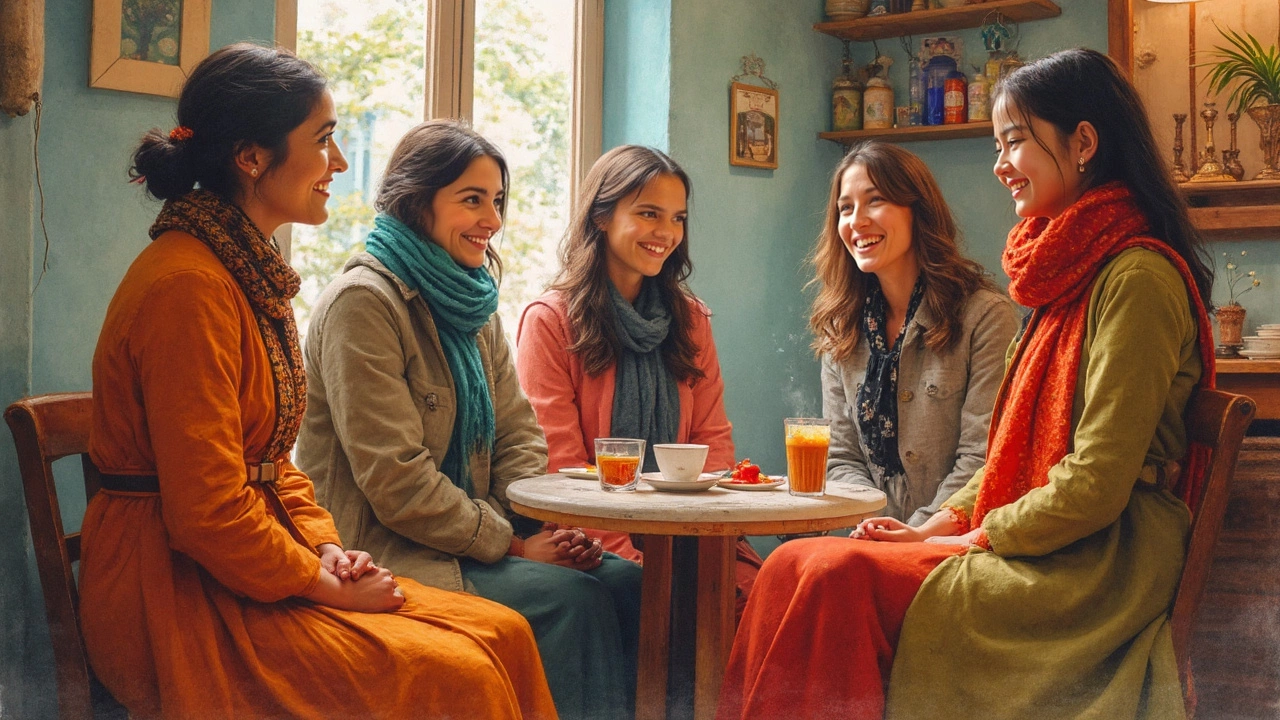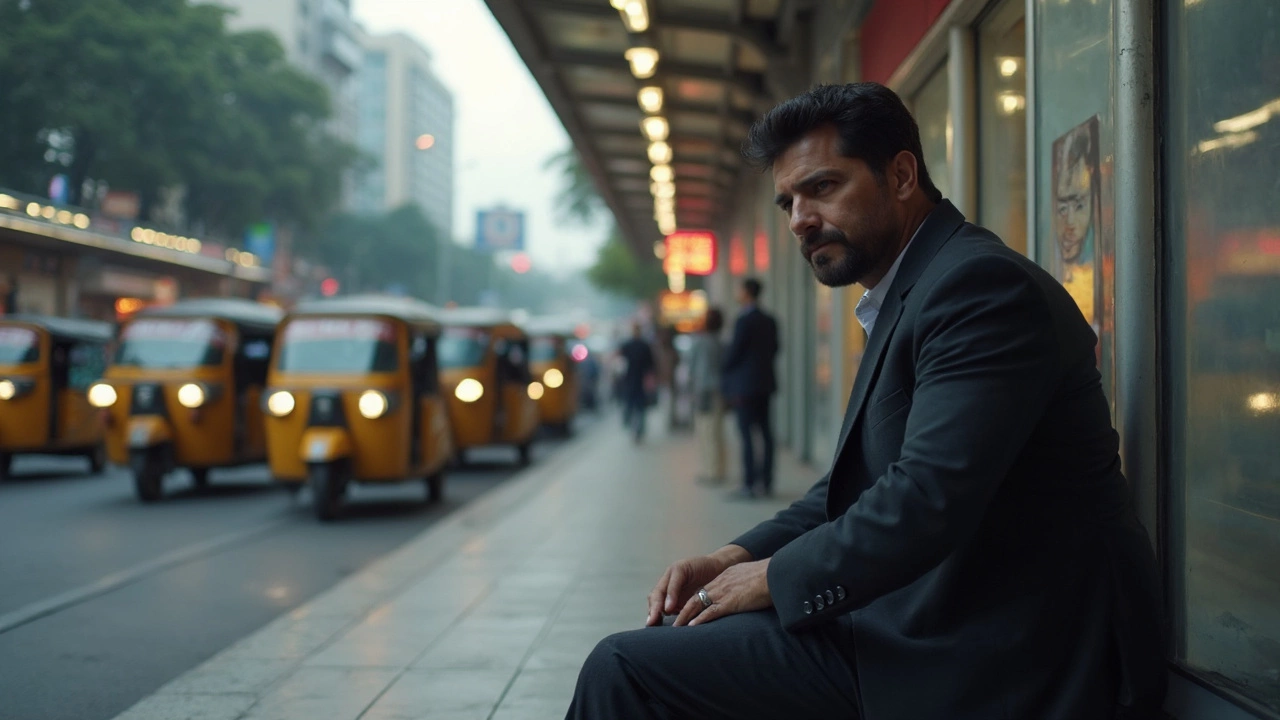How to Sit Comfortably in a Long Coat: Real-World Tips and Style Tricks

You step into a café wearing your favorite sweeping coat. Suddenly, the big question: what do you do with all that fabric? Sit on it, sweep it aside, drape it just so? The internet is full of fails—wrinkled coat tails, torn linings, even coffee spills on pricey wool. Long coats look fantastic. But sitting down while wearing one can feel like dealing with origami instructions. Sometimes, ignoring your coat means brutal creasing or embarrassing bunching. Other times you risk a Houdini act just to get it off and on again without dropping your bag and phone in the process. Let's figure this out—for your coat, your comfort, and your dignity.
The Science—and Struggle—of Coat Construction
Every long coat has its own personality. A double-breasted wool with a satin lining? That's a different animal than a sleek trench or puffy parka. Let’s talk about how most classic long coats are actually designed. The back slit, or vent, exists for ease of movement. The lining provides glide, stopping fabrics from clinging or wrinkling. Buttons, belts, and epaulettes—all those details mean something when you sit. Some coats are cut with a flared hem, so fabric fans out naturally when you settle down. Tailors call this a 'walking skirt' shape, and it was invented to make public transport less of a nightmare. The British Guardsman coat, for example, was shaped to help sitting on horses and in carriages, facts you see mirrored in modern coats.
Material matters—a heavy wool keeps its structure but can pile up in your lower back, causing pressure or awkward bulges. Light trench coats fold ripples across your lap, sometimes creasing forever. Synthetics can get static cling, which then attracts crumbs like a magnet. And don’t even get me started on thick quilted coats, which can trap warm air in all the wrong places. Basically, if your coat has a vent or walking slit, you're in luck. That slit is your secret weapon for sitting. But pay close attention to linings: luxury coats often feature 100% silk for a reason. Silk slides easier and doesn't 'catch' on rough surfaces, which reduces the risk of rips.
Here’s an interesting tidbit: according to a textile study done in Toronto, coats with a double vent are up to 40% less likely to crease at the seat compared to single-vent or ventless options. So when you're shopping for a long coat, take a peek at the back. Your sit-down life will thank you later.
The Smart Move: Proper Technique for Sitting Down
Okay, so you’re approaching your seat. What now? Don’t just flop down. A thoughtful strategy makes all the difference. Start by making sure you have enough space—no sharp objects or dirty puddles on the chair. Now, treat your coat with care. Here’s the trick: as you start to sit, put your hands behind you, gently gather the back of the coat, and pull it so it’s smooth over the seat. This stops the bottom edge from bunching or getting caught and from dragging on grimy floors. For coats with long slits, open the vent to the sides and spread each half evenly across the seat.
If you’re wearing a belted trench or a coat with a sash, unfasten or loosen the belt before you sit. Sitting on knots is uncomfortable and makes your outfit lumpy. Same goes for thick button plackets; an undone front is easier for everyone. In crowded places—like trains or theaters—keep your coat's bulk close. If you can, flip part of the coat around your thighs so it doesn’t dangle into the next seat.
If your chair has arms, use them. Resting your hands here as you perch down lets you control fabric flow better. For extra-long coats, consider tucking the hem under your thighs slightly. It keeps things smooth and avoids accidental stepping by someone passing by. Relax your back; this stops creases and builds better posture too. And if you notice static building up (it happens, especially in winter), a quick spritz with anti-static spray before you leave home prevents that shocking stickiness. Trust me—I've learned that one the hard way.
Sometimes, you don't have much time and it's an awkward space—say, a sidewalk bench or a packed coffee shop. It's completely fine to just hold your coat over one arm and sit on the edge of your seat for a minute or two. No one is judging, and it keeps your coat fresh for longer.

Etiquette and First Impressions: Looking Put-Together, Not Frazzled
People pick up cues from how you treat your clothes. Sitting gracefully in a long coat isn't just about comfort, it says something about your attention to detail. Etiquette guides, like those written by British lifestyle experts in the 1960s, always mentioned removing a heavy coat before a formal meal. The reason: to avoid crowding the table and to signify readiness to socialize. Still, in casual settings or outdoors, it's normal to keep the coat on. But keep in mind, sprawling fabric everywhere sends a messy message.
Manners matter especially at events—dinners, interviews, or theaters. In those spaces, if there's a coat check, use it. Worried about security? Bring a tote bag big enough to stash smaller coats, or at least slip your phone, wallet, and keys inside before handing the garment over. If you have to keep your coat on, fold or arrange it neatly so the hem doesn't brush the floor or bump fellow guests. A neatly smoothed lap is a style trick: it shows you paid attention, even if you had to rush.
If you're at home or a friend’s place, drape your coat over the back of your seat rather than dumping it in a pile. It helps prevent creasing and keeps your look put-together for the trip home. And here's a not-so-secret fact: surveys show people judge an outfit as 20% more stylish when the outer layer—the coat—looks cared for. The number comes from real-world fashion focus group research done in Paris, 2023. Your elegance starts before you even take your seat.
Practical Troubleshooting: Common Long Coat Challenges and Solutions
Even the most seasoned coat-wearers encounter snags. Maybe you've noticed: some fabrics wrinkle, some slip, and some attract lint like nobody’s business. If your coat keeps riding up when you sit, check the fit at the shoulders—too tight, and no sitting hack will fix it. Consider tailoring: even a small adjustment at the back vent or lining can make a thrifted find suddenly behave. If lining rips are a constant, switch chairs—slick hard seats are kinder to silk or satin than rough wood or plastic.
Here's a nifty table to troubleshoot long coat issues and fixes:
| Issue | Why It Happens | Quick Fix |
|---|---|---|
| Creased back/seat | Coat bunches up, fabric not smoothed out | Gently pull coat behind you before sitting; hang to steam out wrinkles later |
| Lining tears | Sharp edges, rough seats, too-tight fit | Check seams, reinforce with fabric tape, choose cushioned chairs |
| Static cling | Dry air, synthetic fiber lining | Anti-static spray, dryer sheet rub, small hand lotion on hands |
| Coat dragging on the ground | Very long hem, high seat | Lift hem onto lap, tuck under thighs, pick seats thoughtfully |
| Belt discomfort | Belt tied tightly or bulky knot | Loosen or untie before sitting |
If you spilled something (life happens), don’t panic. Dab with water, never rub. For stubborn marks, baby wipes can help in a pinch—just avoid colored ones that can stain. And always air dry away from heat. Coat maintenance goes a long way toward making sit-downs less stressful.

Style and Confidence: Making the Statement You Want
Right, so maybe you want to do more than just survive the daily sit-down. A long coat is a power move. Channel the aura of icons like Marlene Dietrich or Zendaya—you never see them awkwardly wrestling their hems. Every sit, stand, and stride is a small performance, and practice makes it seamless. Start at home: test your chair, look in the mirror as you sit, check for how the fabric falls. Notice wrinkle patterns and do little adjustments on the go. Try crossing your legs (if the occasion calls for it) only after your coat is comfortably arranged, so you don't tug the hem out of place.
The right confidence follows when you don’t have to think about your coat every time you move. Trends from TikTok to Vogue this year praise those small moments: the way someone drapes a coat, the casual smoothing of sleeves, the visible ease with new styles. If you’re wearing a vintage coat with a delicate lining, consider an extra slip underneath to preserve the inside for longer wear. Or rock those shoulder pads and bold details—just remember, pull the fabric gently so none of your look gets squished.
Long coats can show off your personality, so choose colors and shapes that feel right. A rich camel wrap, dramatic black tailored coat, or checked wool—each has its own vibe. But nothing says power and comfort like someone who moves in a long coat like it’s just another extension of themselves. Whether you’re settling into the boardroom, riding the subway, or sitting across from your best friend at brunch, knowing how to *sit in a long coat* with grace means you never have to sacrifice style for comfort. Trust your instincts, pay attention to the details, and enjoy the little drama a gorgeous coat can bring.